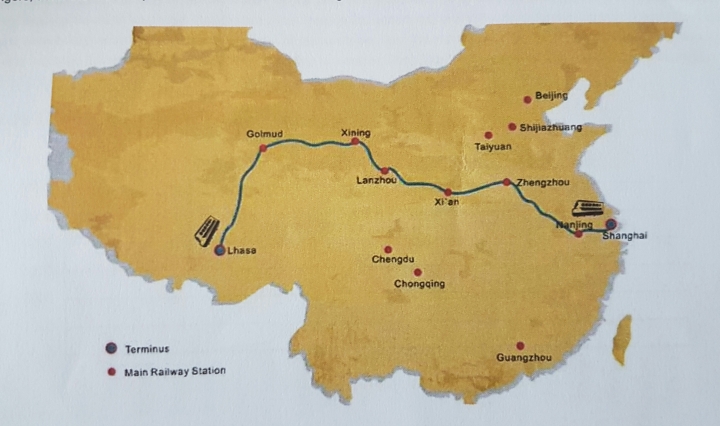
From the first moment I saw this map, I was determined to make this trip. Not so much because I wanted to see Lhasa – that was a bonus – but because it seemed to me I could see most of China in one go! 4373 kilometers of China in the comfort of a modern train! For 48 hours, I would press my nose to the window and watch China zip past. Or so I thought. In reality, over 48 hours, you are going to spend a considerable amount in the dark. But here’s the cool thing: the return train is scheduled to expose the parts of the trip you slept through on the way to Lhasa. So, of course! I booked a return ticket.
The Shanghai – Lhasa Express is a special train. The style is reminiscent of the older green cars from the steam engine era, in sharp contrast to the modern bullet trains. In fact, it looked just like the train I rode from Beijing to Guilin in 1989. It is clean and well maintained with a variety of food services, but most travelers bring bags of snacks with their luggage. Express means that it doesn’t make local stops, in fact, it hardly stops at all in the 4373 km route.
The train is unaccountably late this day, and while we are waiting to board, I discover that, of the 660 passengers, I am the only Westerner. Announcements are in Chinese only, but someone nearby always translated if it sounded urgent. Something about flooding on the line somewhere ahead…. But the Chinese passengers could not have been kinder or more friendly to me. I think it is a huge benefit to be a single female traveler.
I settle into my little 4-bunk “soft sleeper” cabin with 3 male strangers who actually sleep most of the trip – but here’s a train travel tip: wear something that covers you and that you are comfortable sleeping in because you are not going to be slipping into silk pajamas like on the Orient Express. Pillow and comforter are provided, but privacy isn’t. My return trip is with 3 teenagers – very cool Tibetan kids returning to school in Shanghai after the summer break. Always, ALWAYS, in China, there are people who speak English and who are eager to be good hosts. But you should have the WeChat app on your mobile because of the instant translation service.
Finally, we’re loaded, and without fanfare, the train slips out of Shanghai station and I am captivated from minute one.
As we head north through Nanjing and beyond, the lower mainland is cross-crossed by canals and streams, flat and green to the horizon, with rustic farms, sprawling cities, bridges old and new, industries of all sorts. We flash through cities without pause.
We do slow slightly to cross the mighty Yangtze River and look down on river freighters that have been using this river highway for centuries.


We thunder on. Slowly, the countryside becomes rolling hills, with wide valleys and large-scale agriculture, and the occasional temple on a hilltop.
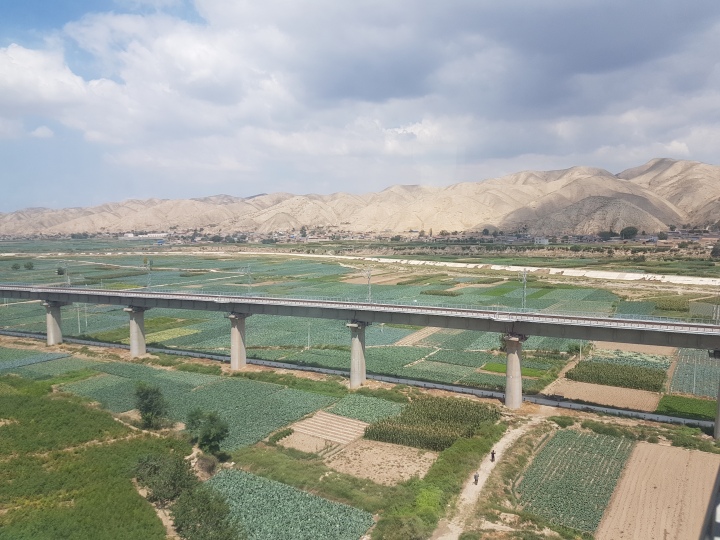
And then craggy hills and rushing muddy rivers leading to terraced hillsides beyond.
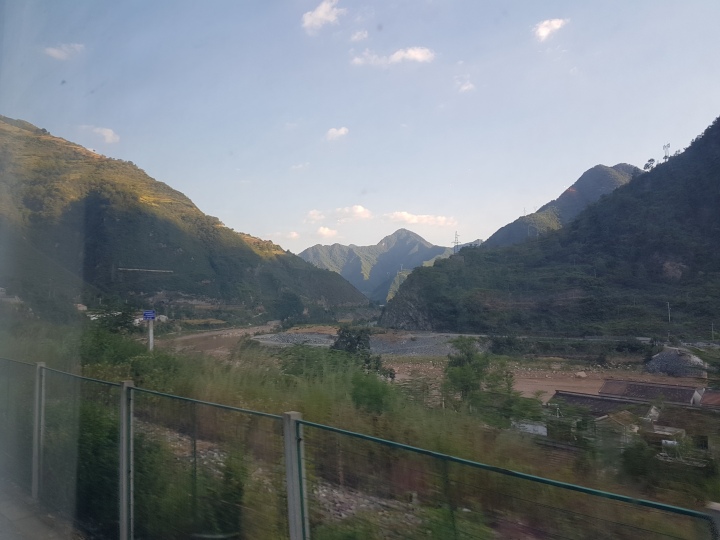
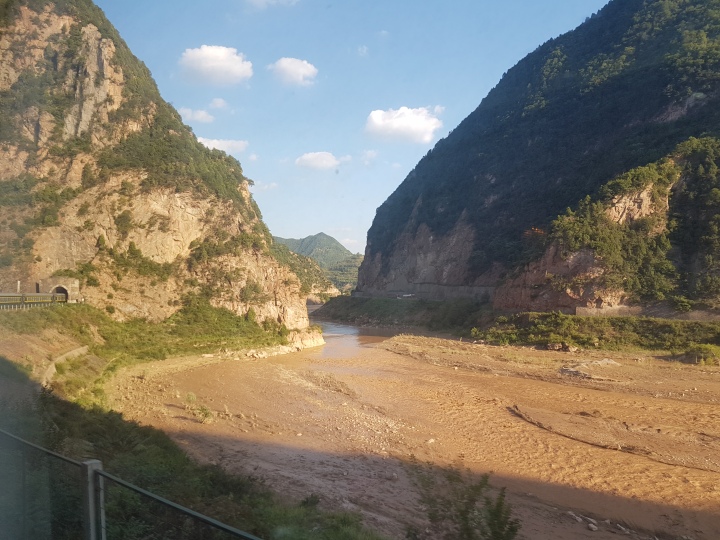
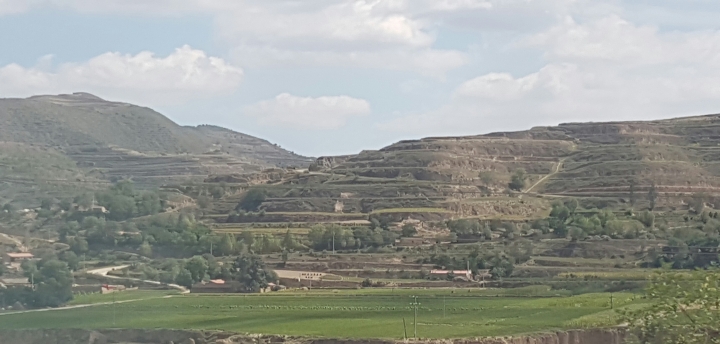
Here we mostly fall asleep to the gentle roll and rumble of the train as night falls.
zzzzzzz. But then! Just past halfway to Lhasa, at Xining, all the passengers are roused just after midnight to switch trains to the exact same train BUT with an added feature – access to oxygen. We are going to be climbing now, on to the Tibetan plateau and over mountain passes at 5000 meters. I am told lots of people suffer from altitude sickness. So if you need oxygen, you buy a plastic tube at the snack bar, stick one end in your nose and the other into the oxygen stations all down the window aisle of each car. I managed without.

We all fell back to sleep and then ….. morning… with Tibet is all its glory. For almost 12 hours. Utterly spectacular.
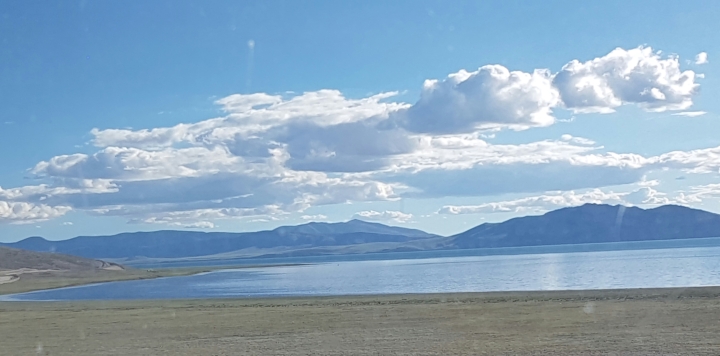
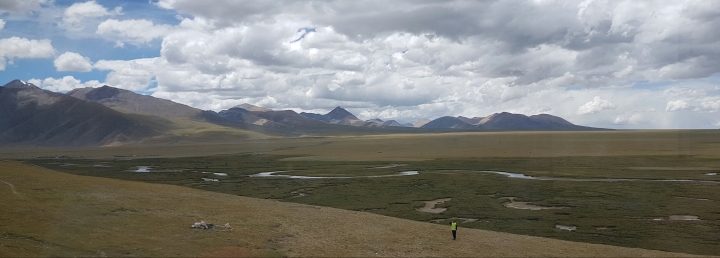
We see practically no one. We hurtle over vast prairies set up against mountains – just like my home in Alberta. Often, the train runs parallel to the only highway in this part of the world – and of course, I want to drive it one day!

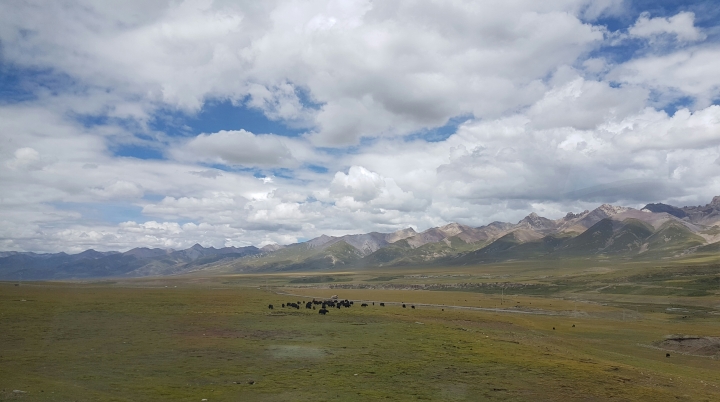
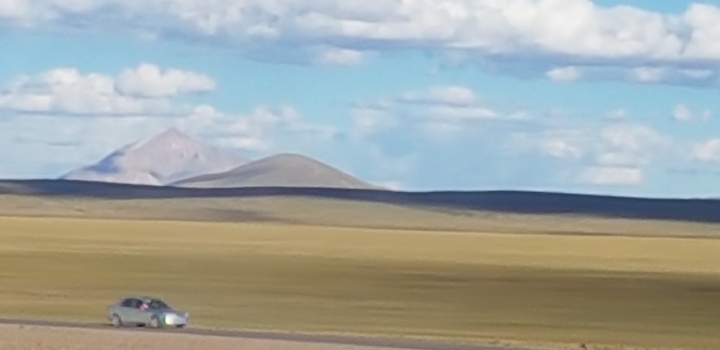
In the morning, we pass through a small rainstorm. And then the broad blue sky dazzles again.

We fly past massive lakes and non-descript towns. Into new tunnels and over new bridges. Past old yaks grazing in mountain streams.
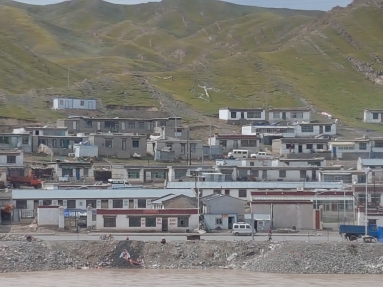

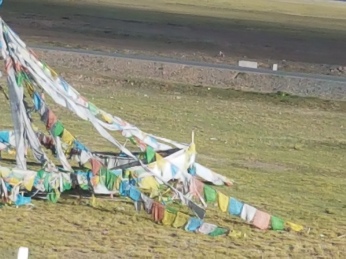
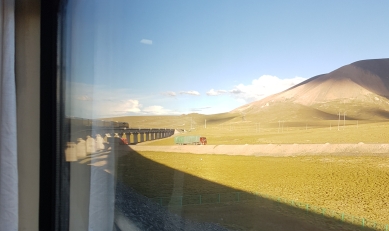
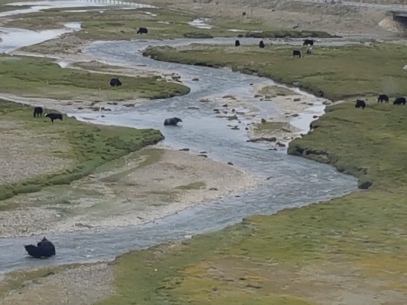
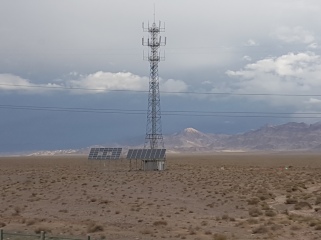 But we never leave wireless internet access except in the tunnels. Seriously. I can track our entire trip on Google Maps – using a VPN of course.
But we never leave wireless internet access except in the tunnels. Seriously. I can track our entire trip on Google Maps – using a VPN of course.
Then we are high in the mountain valleys where peaks absolutely dwarf human habitation.
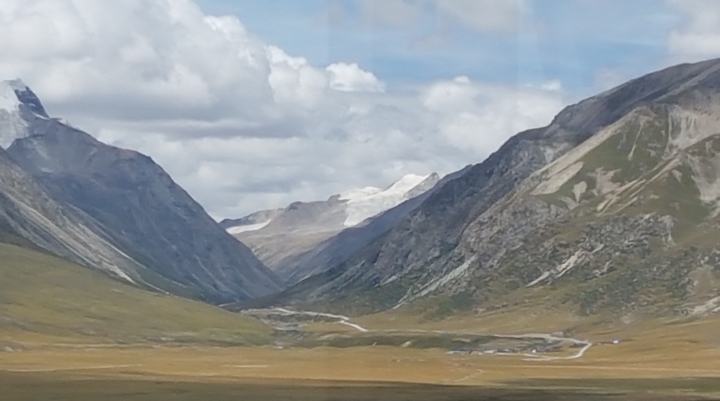
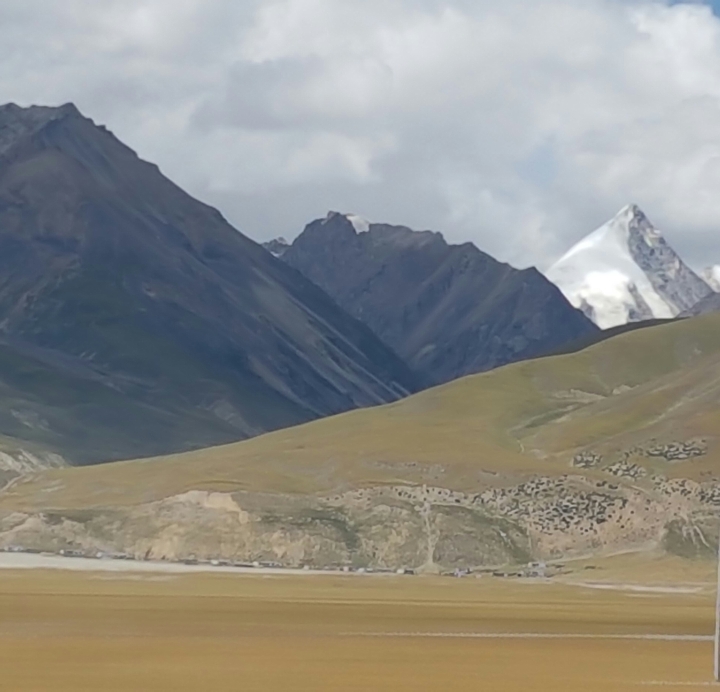
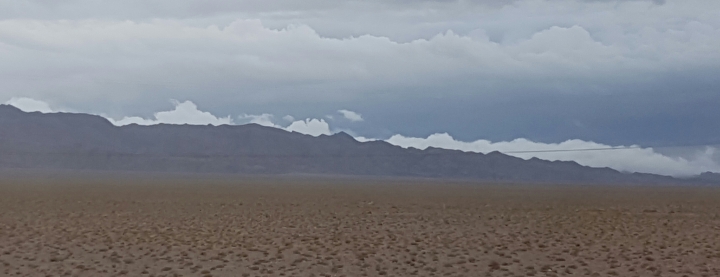
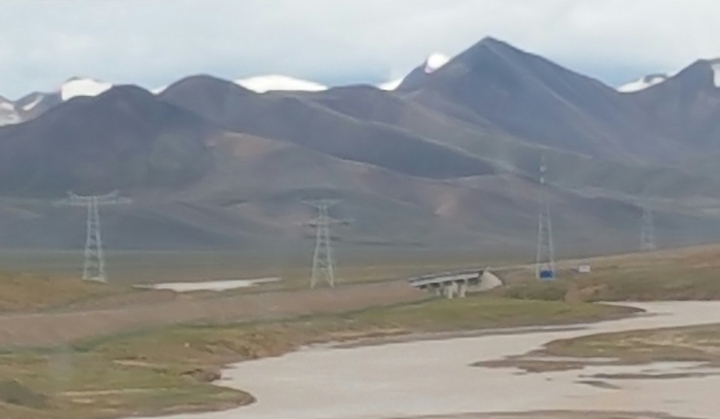
And finally, we cross the highlands. Again, the landscape is stunning and I almost wish the 48 hours were not over.
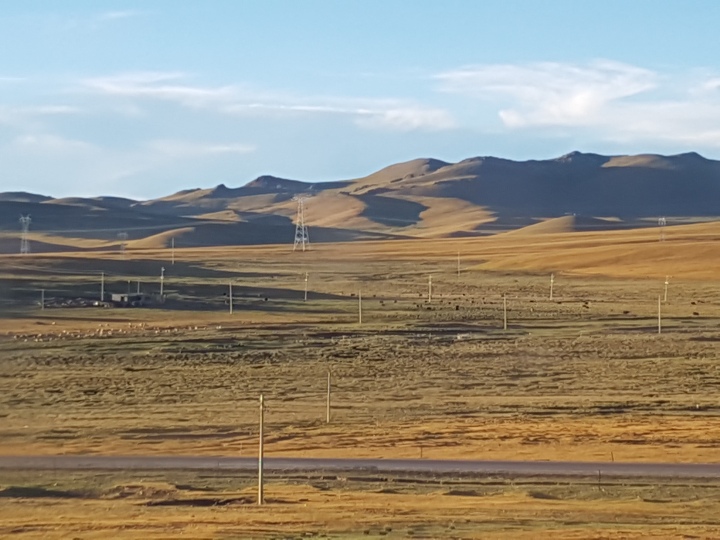
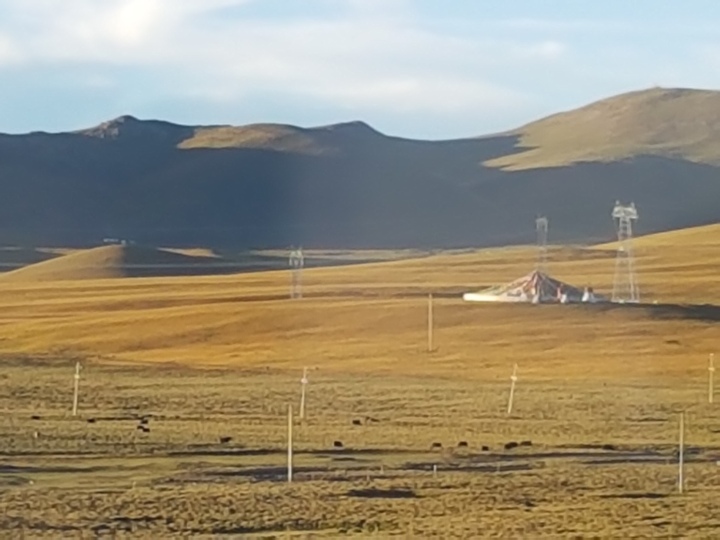
At last we start down through mountains into Lhasa in the late afternoon sun.
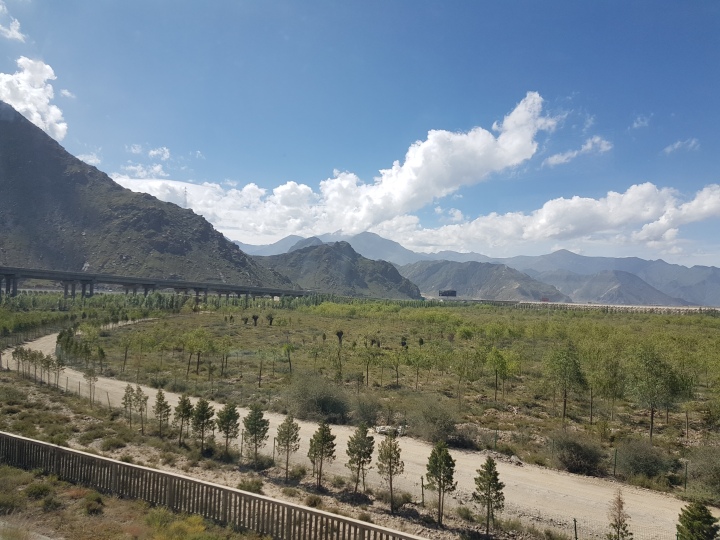
I spend three days enjoying Lhasa, then board the train, press my nose to the window on the other side of the train, and head back to Shanghai. It was brilliant. Another 4373 reasons….
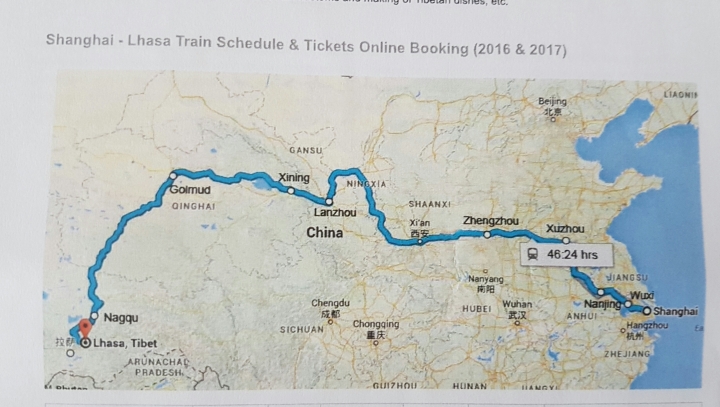
My China train travel tips:
- Normally, I book train tickets through Trip.com. Very easy and efficient. Add your details once – passport and credit cards, email and phone number – and then buying tickets is easy. Your confirmation comes by email, but you must pick up your ticket in person at a Train Ticket Office. So arrive early, as the lines can be long.
- Most importantly, do not try to book a roundtrip to Lhasa without a visitors permit. It just isn’t possible. So get in touch with a Tibet tourism website, and they can actually do the whole thing for you. This was the service I used and it efficient and professional, with excellent service in English. TibetTravel.org
- Remembering your car and seat numbers makes boarding easy in the crush of people. You will find the car numbers along the boarding platform; stand at yours because trains load and leave quickly.
- Try to book the lower bunk, but if you can’t, you shouldn’t have too much trouble trading with a young person who can scramble up the climbing device.
- Bring along a travel mug with lid. You’ll be wandering down the aisle for hot water fairly frequently. Bring sachets of coffee or oatmeal or soup, and enjoy. Bring some to share.
- Forget your huge suitcase. Your luggage needs to fit under a bunk. And you might want to access it, but don’t plan on it. The smaller the better.
- Wander to the dining car and have a beer with the locals. They can share some good stories.
- Bring wet wipes for your personal hygiene. The toilets get grungy along the way.
- Ear plugs aren’t a bad idea when the teenagers around you want to party or the old guys around you are snoring. Not just on trains, but in hotels as well. Getting upset will make no difference.
- Of course, get a China sim card. Inexpensive and you can stay in touch. Download a VPN before you arrive in China; you won’t be able to while in China.


































